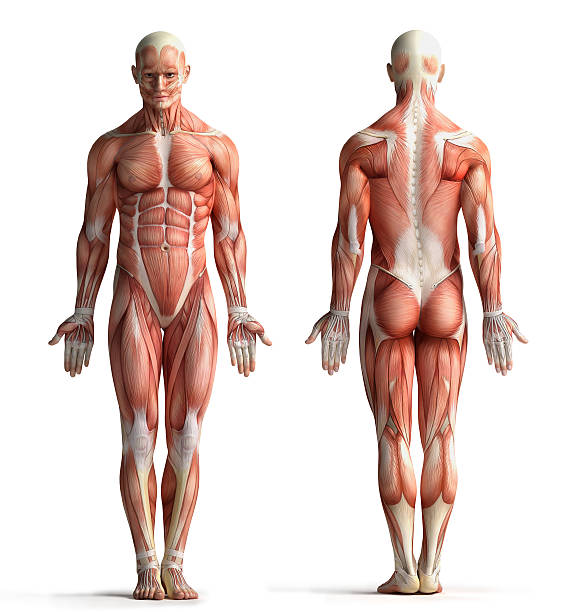Anatomy : Introduction

Human anatomy is the study of the structures of the human body.
ANATOMICAL POSITION: When a human body is in standing upright position and faces forward with arms on either side of the body and palms facing forward, then it is referred to as anatomical position.
- Gross anatomy is subdivided into surface anatomy (the external body), regional anatomy (specific regions of the body), and systemic anatomy (specific organ systems).
- Microscopic anatomy is subdivided into cytology (the study of cells) and histology (the study of tissues).
- Today, we are listing some facts about the human bones, muscle, blood and organ systems before going into details about the human anatomy.
Bones & Muscles
1. Number of bones – 206
2. Number of muscle – 650
3. Number of vertebrae in the neck – 7
4. Number of ribs – 24 (12 pairs)
5. Number of vertebrae of spinal column – 33
6. Number of bones in face – 14
7. Number of bones in skull -22
8. Number of bones in chest – 25
9. Number of bones in arms -6
10. Largest bone – femur
11. Smallest bone – stapes middle ear
12. Smallest muscle – stapedius middle ear
13. Number of bones in newborn baby – 306
Facts about Organs
Facts About Blood
29. Normal blood pressure- 120/80
30. Lifetime of white blood cells -10 – 15 day’s
31. Universal donor blood group -O
32. Blood bank in the body – Spleen
33. River of Life is called Blood
35. Lifetime of Red blood cells – 120 day’s
36. Universal recipient blood group – AB
37. Number of blood cholesterol level – 100 mg
38. Normal body temperature – 98.4 f
39. Pulse rate in one minute – 72 time’s
Some Basic Facts
Definition of Cell:-
Cell is the smallest structural and functional unit of any living organism. It is also called the “building block of life”. Water consists of 70% or even more of the total cell mass. The chemical composition of a cell comprises of Carbohydrates, Lipids, protein, Nucleic Acids, inorganic salts ( sodium, potasium), phosphates and chlorides.
Definition of Tissue:-
Tissue is the ensemble of cells from the same origin that together carry out a specific function. The 4 different types of tissues are
a) Epithelial Tissue
b) Connective Tissue
c) Muscle Tissue
d) Nervous Tissue
Basic Information about Nutrients:-
Fat Soluble Vitamins are Vitamin A, D, E and K
Water Soluble Vitamins are Vitamin B and C
1gm of fat contains 9 calories
1 gm of protein or carbohydrate contains 4 calories
Essential fatty acid is Linoleic Acid
Minerals are involved in water balance, acid-base balance, energy reactions and in nerve impulse stimulation. Examples: Iron and Zinc
Most common mineral deficiency is Iron Deficiency.
Most toxic vitamin is Vitamin D. Toxicity of Vit-D causes renal damage, cardiovascular damage, high blood calcium levels and Calcium deposition in soft tissues.
Mineral requirement of a human body on a daily basis are
Calcium – 1000mg/day
Phosphorus – 700 mg/day
Iron – 700 mg/day
Zinc – 8-11 mg/day
Magnesium – 320-420 mg/day
Vitamin names and their daily requirement in human body:-
Vitamin A – Retinol ( 700-900 mg/day)
Vitamin B1 -Thiamin (1.1- 1.2 mg/day)
Vitamin B2 – Riboflavin (1.1-1.3 mg/day)
Vitamin C – L-Ascorbate (75-90 mg/day)
Vitamin D – Cholecalciferol & Ergocalciferol (5 mg/day)
Vitamin E – Alpha tocopherol (15 mg/day)
Vitamin K – Phylloquinone (90-120 mg/day)
Body Mass Index ( BMI) :-
Body Mass Index = Weight/ (Height)^2 and is measured in Kg / m2
The different BMI Indicators are
BMI < 18.5 is underweight
BMI -18.5 to 22.5 is normal
BMI- 22.6 to 27 is overweight
BMI-27.6 to 32.5 Class-I obesity
BMI- 32.6 to 37.5 is Class-II obesity
BMI- 37.6 to 49.9 is Class-III obesity
BMI > 50 is considered Severe Obese.


